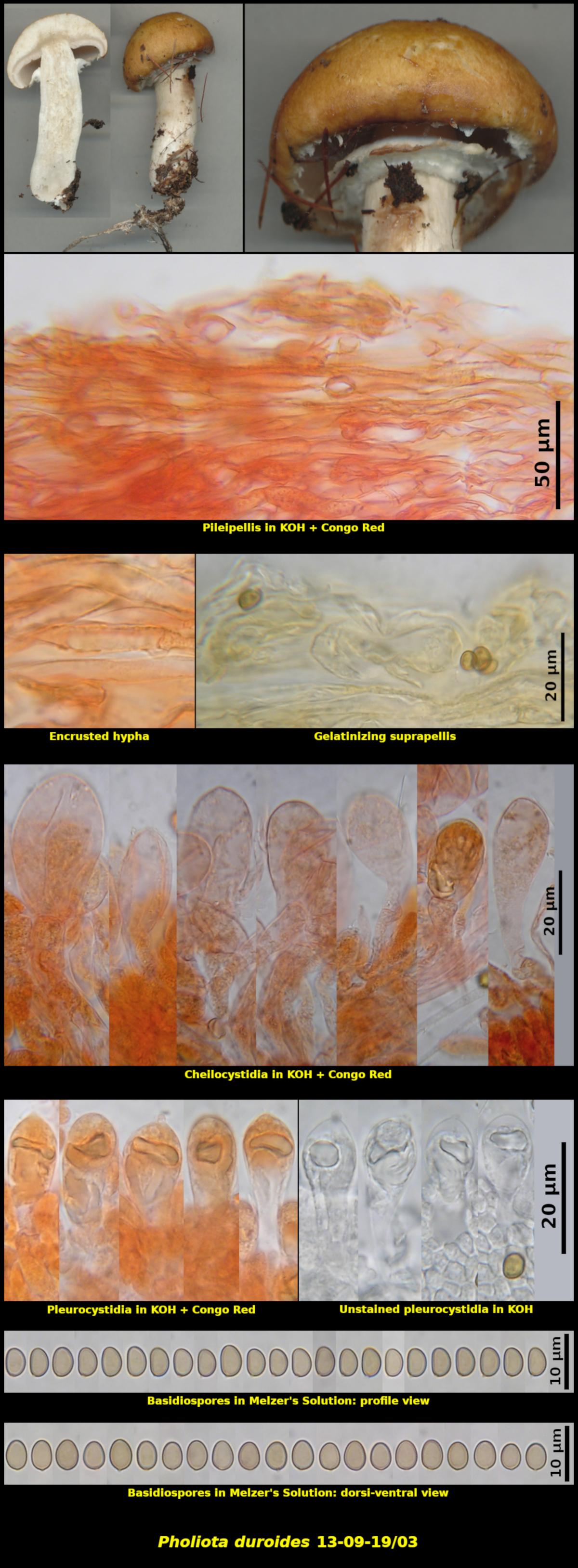Fleshy Fungi of New Brunswick >>
Pholiota duroides
Pholiota duroides Peck

Solitary at the side of an old woods road, associated with Picea rubens, Populus tremuloides, Acer rubrum, Betula papyrifera and Larix laricina, Kouchibouguac National Park, New Brunswick (13-09-19/03).
Basidiospores light brown in spore print, inequalaterally elliptical to subreniform in profile, slightly flattened dorsi-ventrally and ovate in dorsi-ventral view, smooth, without a germ pore, darkening in KOH but remaining unchanged in Melzer’s Solution, 4.6-6.3 X 3.3-4.0 µm, D/d = 1.27-1.57 (average[37]: 5.2 X 3.6 µm, Q = 1.44) in profile, 4.7-5.6 X 3.6-4.2 µm, D/d = 1.24-1.45 (average[24]: 5.2 X 3.9 µm, Q = 1.34) in dorsi-ventral view. Cheilocystidia forming a continuous sterile margin, large and conspicuous, saccate. Pleurocystidia abundant, clavate, frequently mucronate, containing a hyaline refractile inclusion, with inclusion not turning yellow in KOH. Pileipellis an irregularly interwoven gelatinous tissue of colourless hyphae over a loose subcutis of brown radially encrusted and clamped hyphae, with gelatinous tissue possibly wearing off in age.
Pholiota duroides has reported only rarely and seems to be known only from eastern parts of Canada and the United States. Smith and Hesler (The North American Species of Pholiota, Hafner Publ. Co., NY. 1968) provided a detailed microscopic description of Charles Peck's orginal material, which agrees closely with that of the collection reported here. It is a relatively sturdy mushroom with a prominent scaly annulus and narrow pale lamellae. The hymenial cystidia are prominent and easy to find. The pleurocystidia are chrysocystidia, being often mucronate (with a small terminal projection) and contain a large refractile inclusion. The inclusion is never yellow in KOH but remains quite clear. As Smith and Hesler pointed out, the basidiospores are slightly flattened dorsi-ventrally.
Photograph: D. Malloch (13-09-19/03).